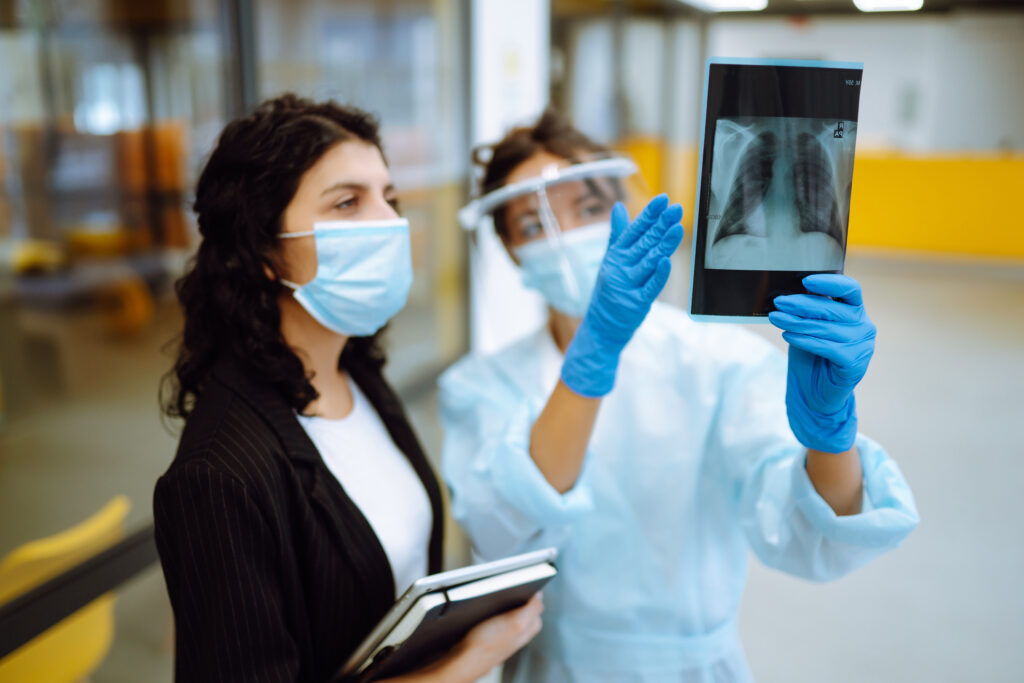- Zine Konwayo’s life changed in 2012 when she was diagnosed with multidrug-resistant tuberculosis (MDR TB), a type of TB for which the normal antibiotics don’t work.
- Konwayo spent more than five years of her life in hospital while being treated. Despite being TB free for nearly five years now, she’s still struggling to find work.
- In this #SliceofLife, Konwayo describes the lingering effects of TB even after someone has been cured. #SliceofLife stories are Bhekisisa’s short, first-person accounts of the experiences of some of the people we interview.
“In 2010, my fiancé passed away from tuberculosis (TB). His doctors told me to go to the clinic immediately if I had symptoms like his.
“So in 2012, when I started coughing and losing weight, I got tested. I was diagnosed with multidrug-resistant TB, a form of the disease for which one of the normal antibiotics, rifampin, does not work.
“I was admitted to the Fort Grey TB hospital [which has since been closed] for three months.
“When doctors tested me again [after this treatment], they found I had extensively drug-resistant TB (XDR TB). [This is a form of TB in which very few of the drugs used to treat the disease will still work.] I only started recovering once I was given [a new type of drug called] linezolid.
“In 2015, I tested negative for TB. I was finally discharged.
“That same year, I moved to Cape Town. I felt fresh and healthy. I even gained weight.
“The feeling didn’t last long, though. A few months later, I started coughing up blood while on my lunch break at work.
“I was rushed to hospital, and a chest X-ray showed that I had an abscess [a pocket filled with pus] on my left lung. The abscess had been there for a long time.
“Again I was admitted. This time around I spent two years at Brooklyn Chest Hospital [in Cape Town]. The XDR-TB was back.
“Doctors told me they couldn’t operate on my lungs to remove the abscess [because my body was too weak for surgery]. So they taught me how to do postural drainage [lying or sitting in a series of positions while coughing to get fluid out of the lungs].
“I did this three times a day.
“I was cured of TB in 2018. But my lungs have been damaged and I still struggle to breathe.
“I’ve not had a steady job since my first diagnosis in 2012. Even though I was cured in 2018, I had to go for regular check-ups for two years afterwards.
“I had work for a time in 2020, but the stigma of TB still follows me.
“Employers are hesitant to hire me and they want written confirmation from my doctor that I’ve been cured.
“The state of my lungs also limits where I can work. For example, I can’t work in cold places, because my lungs won’t be able to cope.
“Two years after my last check-up, I’m still looking for work. My age is starting to worry me. I’m turning 36 this year — and the gap in my CV is getting longer.”
People who live in overcrowded homes and don’t have healthy food are more likely to get infected with TB. A 2022 study in South Africa found that the disease often makes poor people even poorer.
Like Konwayo, people diagnosed with TB often struggle to earn an income because they can no longer do physical work or have to go for lengthy treatment. The cost of being ill with TB equals, on average, 58% of a patient’s individual income, which includes spending money on transport to get to treatment centres and buying food.
But TB rarely affects just the individual. For households caring for a TB patient, the disease amounts to 39% of the home’s collective income. Even though treatment for TB is free in South Africa, buying nutritious food and struggling to get a disability grant make life harder for many TB patients who are already vulnerable.
Nicole Ludolph is a health journalist at Bhekisisa.






